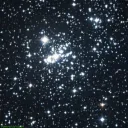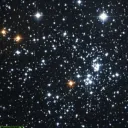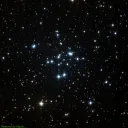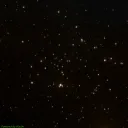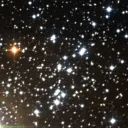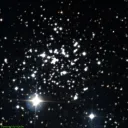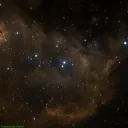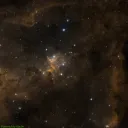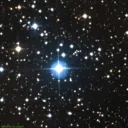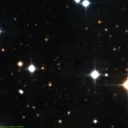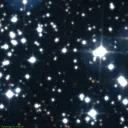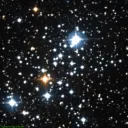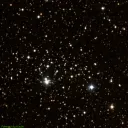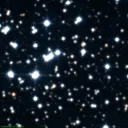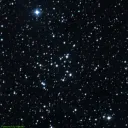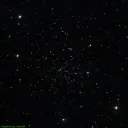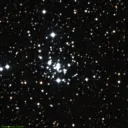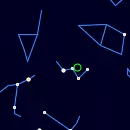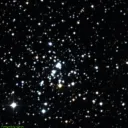Winter Nebulae
The winter sky offers a rich selection of bright and easily observable nebulae, often highlighted by the crisp, clear nights that characterize the season. This time of year brings some of the most famous nebulae into view, making it ideal for beginners and seasoned astronomers alike. Winter nebulae are often large and luminous, creating stunning sights even through small telescopes or binoculars.Sky Map
Celectial bearing and elevation at 16:04
This skymap is a dynamic visualization that displays the positions of celestial objets in the night sky for your specific location on the current date. It allows you to interactively explore the celestial landscape by moving it horizontally, enabling you to preview how the arrangement of stars will change as the night progresses.
h Persei Cluster (NGC0869)
Open Cluster
NGC0869 is an open cluster with apparent magnitude 3.70 in the constellation Perseus, spanning approximately 14.4 arcseconds in the sky.
chi Persei Cluster (NGC0884)
Open Cluster
NGC0884 is an open cluster with apparent magnitude 3.80 in the constellation Perseus, spanning approximately 10.5 arcseconds in the sky.
M34
Open Cluster
An open star cluster containing over 400 stars, located approximately 1,400 light-years away in the constellation Perseus.
Owl Cluster (NGC0457)
Open Cluster
NGC0457 is an open cluster with apparent magnitude 6.40 in the constellation Cassiopeia, spanning approximately 7.8 arcseconds in the sky.
NGC0654
Open Cluster
NGC0654 is an open cluster with apparent magnitude 6.50 in the constellation Cassiopeia, spanning approximately 6.3 arcseconds in the sky.
IC1848
Star cluster + Nebula
IC1848 is a star cluster + nebula with apparent magnitude 6.50 in the constellation Cassiopeia, spanning approximately 40 arcseconds in the sky.
NGC0129
Open Cluster
NGC0129 is an open cluster with apparent magnitude 6.50 in the constellation Cassiopeia, spanning approximately 5.4 arcseconds in the sky.
IC1805
Star cluster + Nebula
IC1805 is a star cluster + nebula with apparent magnitude 6.50 in the constellation Cassiopeia, spanning approximately 1 arcminute in the sky.
NGC1027
Open Cluster
NGC1027 is an open cluster with apparent magnitude 6.70 in the constellation Cassiopeia, spanning approximately 7.8 arcseconds in the sky.
NGC0225
Open Cluster
NGC0225 is an open cluster with apparent magnitude 7.00 in the constellation Cassiopeia, spanning approximately 4.2 arcseconds in the sky.
NGC0663
Open Cluster
NGC0663 is an open cluster with apparent magnitude 7.10 in the constellation Cassiopeia, spanning approximately 6 arcseconds in the sky.
M103
Open Cluster
M103 is an open cluster with apparent magnitude 7.40 in the constellation Cassiopeia, spanning approximately 4.5 arcseconds in the sky.
NGC0659
Open Cluster
NGC0659 is an open cluster with apparent magnitude 7.90 in the constellation Cassiopeia, spanning approximately 4.2 arcseconds in the sky.
NGC0637
Open Cluster
NGC0637 is an open cluster with apparent magnitude 8.20 in the constellation Cassiopeia, spanning approximately 4.5 arcseconds in the sky.
NGC0189
Open Cluster
NGC0189 is an open cluster with apparent magnitude 8.80 in the constellation Cassiopeia, spanning approximately 2.7 arcseconds in the sky.
NGC0436
Open Cluster
NGC0436 is an open cluster with apparent magnitude 8.80 in the constellation Cassiopeia, spanning approximately 5.7 arcseconds in the sky.
Data Credits
The nebulae information on this page is sourced from the OpenNGC project, developed by Matteo Verga. OpenNGC provides detailed data on the NGC catalog, which is a valuable resource for exploring deep-sky objects such as nebulae.
For more details or to contribute to OpenNGC, visit the official GitHub repository: OpenNGC on GitHub.

